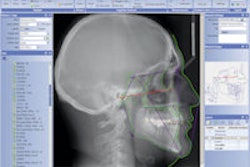A surgical technique using a muscle flap from the thigh restores facial motion and the ability to smile in patients with facial nerve paralysis resulting from neurofibromatosis type 2 (NF2), according to a study in Neurosurgery (June 2012, Vol. 70:2 Suppl Operative, pp. 237-243).
Kalpesh Vakharia, MD, and colleagues at Harvard Medical School report good results with "smile reanimation" in NF2 patients with facial nerve paralysis. They hope their study will help remind doctors to include facial rehabilitation in their treatment plan for patients with NF2.
Neurofibromatosis type 2 is an inherited condition that causes patients to develop noncancerous tumors, typically along the auditory nerve, with the potential to cause hearing loss. When the facial nerve is affected by either tumors or surgery to remove them, facial paralysis commonly results.
The researchers reported their experience with a muscle and nerve transfer technique for restoring facial motion in five patients with NF2 and facial paralysis. All patients had severe paralysis of one side of the face, with drooping and lack of motion at the corner of the mouth on the paralyzed side.
To restore facial motion, surgeons transplanted a small flap of the gracilis muscle from the inner thigh to the face. The gracilis muscle flap, including associated nerve and blood vessels, was used to replace the damaged area causing facial paralysis. Patients received physical therapy during the recovery period after surgery.
Before-and-after photographs showed that the gracilis flap procedure was successful in restoring the patients' ability to smile. Sophisticated geometrical measurements found a significant increase in the ability to lift the oral commissure on the paralyzed side. Just a few millimeters meant the difference between no movement and a natural-looking smile.
Some patients said that the procedure restored the ability to smile spontaneously, the researchers noted. That's a potentially important advantage, they wrote, because while other procedures can restore facial motion, the patient has to make a conscious effort to smile.



















